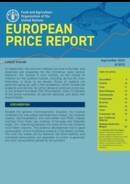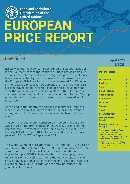Publications
May edition, with prices and analysis for major commodities.
Introduction:
The Southern European traders are preparing for the summer months, which are expected to see high consumption mainly due to increased tourists presence, after three years of COVID-19 restrictions. Prices are high for high-end products, such as demersal fish, cephalopods and shrimp. Inflation in Europe has started to decline, but for food items it is generally still exceeding 10 percent, and for many seafood products, prices are...
Easter was the main consumption period of seafood, especially in the Southern part of the continent. Prices are still going up as consumer interest continues strong, and practically all price levels are accepted by the consumers. In the present issue of the European Fish Price Report, prices increased for 25 percent of the recorded prices; for 20 percent they declined, while 55 percent stayed stable. Overall, salmon prices fell somewhat after the sky-high levels reached...
Demand for seafood is slowing in the European market, as inflation is passed on to consumers. In a recent study on the impact of the Ukraine conflict on European Union consumer behaviour, it was found that 50 percent of the interviewed felt fish prices went up strongly. Fish was thus second only to red meat among all food products where such price increases were seen.
The first months of the year are generally a slow sales period for fishery and aquaculture products in Europe, and 2023 has not been an exception to this rule. Demand was low over the course of February, but prices generally moved up, especially for seabass and seabream and groundfish. In this issue of the European Fish Price Report, some 31 percent of the fish prices moved up, 27 percent moved down, while 41 percent stayed...
January is generally a quiet month for fisheries and aquaculture products sales in Europe, after the strong Christmas and New Year sales. Collective catering is solely responsible for some limited sales compared to a very reduced demand from retailers and caterers in Europe.






